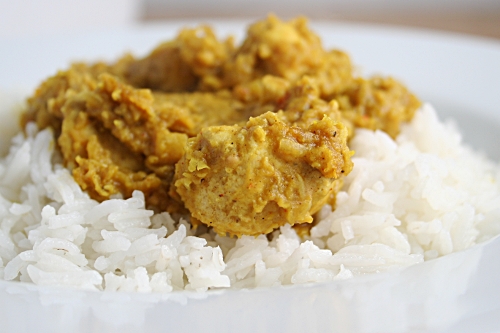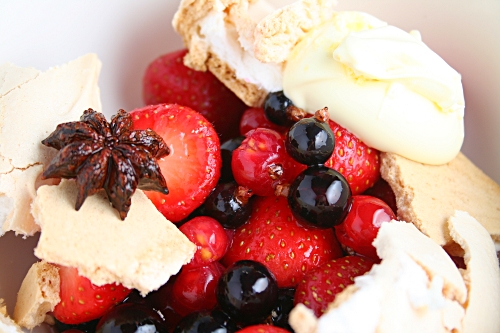
Cooking fish en papillote (literally translated from French as ‘in parchment’) involves wrapping it up the very tightly in parchment paper to ensure that the moisture stays in the parcel as it cooks. The wrapping process is very important as you don’t want even one bit of steam to escape! You can tell if you get it right because the parcel puffs up in the oven.
Many recipes involve using fillets of fish but there’s nothing to stop you using a whole fish, just adjust the cooking time accordingly. The fish steams as it cooks and ends up wonderfully moist and tender. It does have enough water in it to help the steaming process but it’s always good to give it a bit of a helping hand with some fish stock or white wine, as this adds to the flavour. In fact, if you do try the recipe with a fillet of fish, adjust the cooking time accordingly and put the vegetables inside the parcel – beans and cherry tomatoes work well. When doing a whole fish for 2 people you may need to cook the vegetables separately as it could be a struggle getting everything to fit.
When you cut the parcel open you’re initially treated to a burst of steam – watch your hands! – and then the wonderful smell of the delicately cooked fish. It’s so simple – just put it in the oven, sit back with a glass of wine and let the magic happen.
Sea Bream en Papillote
Serves 2
Cooking time: 30 minutes
Prep time: 20 minutes
1 sea bream (approx 500g), gutted, washed and patted dry.
8 new potatoes, sliced to the thickness of a pound coin
dash of white wine
olive oil
salt and pepper
a lemon
a few sprigs of fresh rosemary
vegetables, to serve
Preheat the oven to 200c. Boil the potatoes for 6 or 7 minutes until tender but not completely cooked. Drain and leave to cool briefly whilst you prepare the fish.
Score the skin of the fish a with a sharp knife, leaving 2-3cm gaps, then season all over (inside and out) with the salt and pepper. Stuff some long slices of lemon zest and a few sprigs of rosemary inside the cavity of the fish, then do the same on top, putting the rosemary in the scored parts of the fish and laying slices of lemon on top.
Get a large piece of parchment paper and oil it slightly. Put the potatoes on the parchment in one layer so that they form a base for the fish, then place the fish on top. Wrap it up as tightly as possible leaving one end open, pour the wine in (not too much, maybe 30ml?) then seal the parcel. We got a bit paranoid with the parcel and stapled it together along the top – there’s no need to do that yourself! Place in the oven for about 30 minutes, depending on the size of your fish, until cooked through completely.
Serve on a warmed plate with the vegetables.








